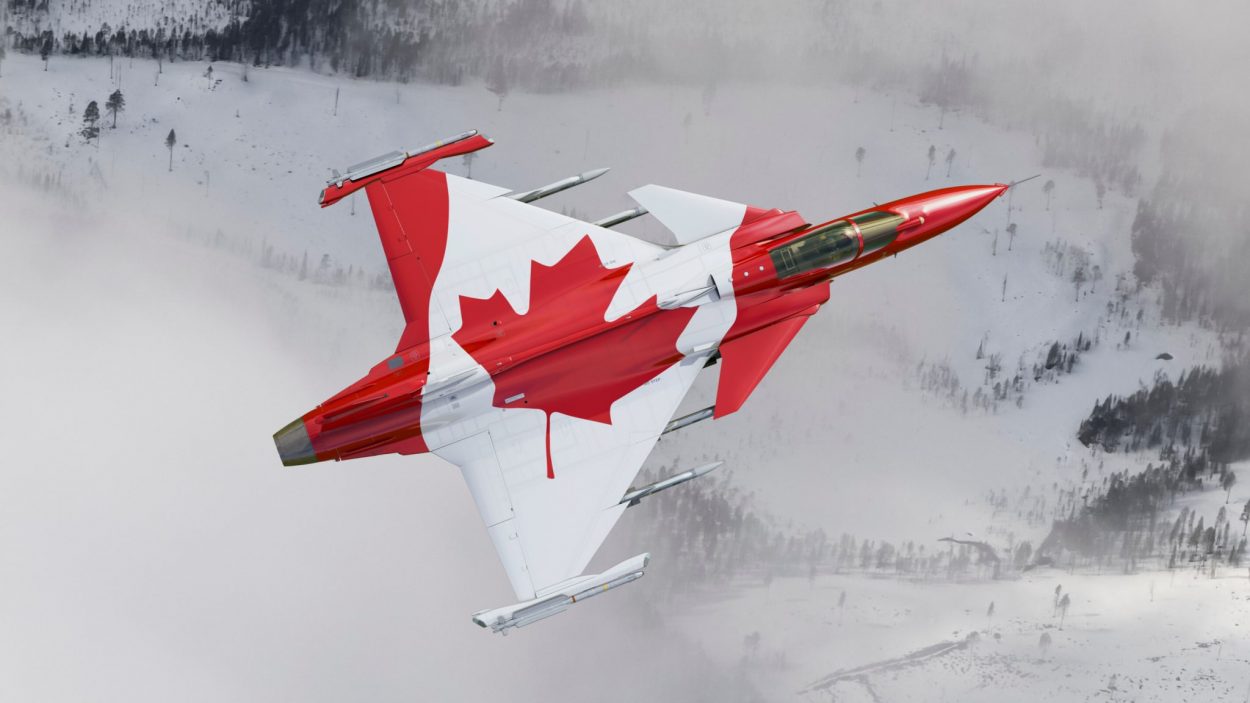Canada is buying an RBS 70 NG short-range air defense system from Swedish defense manufacturer SAAB for roughly C$227 million ($168 million) to protect its troops deployed overseas.
To support air defense for the Canadian Armed Forces, the RBS 70 NG is expected to contribute to the country’s increased forward presence in Latvia, strengthening NATO’s collective defense posture in the area. The system will reportedly be delivered later this year.
“This capability will enable Canadian troops to defend themselves against fixed-wing aircraft and helicopters within its range, close air support aircraft, class 1 small Uncrewed Aerial Systems, and larger Uncrewed Aerial Systems. This is the first time since 2012 that the Canadian Armed Forces will have an Air Defence capability – and the first systems are expected to be delivered later this year,” said the Canadian Ministry of National Defense.
The RBS 70 NG, which is intended to help the Canadian Armed Forces’ air defense, will contribute to strengthening Canada’s increased forward presence in Latvia and, consequently, NATO’s collective defense in the region. The Baltic countries have repeatedly expressed concern over the Ukraine war spilling over and the threat posed by Russia, warring an enhanced NATO presence in the region.
The Latvian Ministry of Defense also has RBS 70 NG in its arsenal. The ground-based RBS 70 next-generation (NG) very short-range air defense (VSHORAD) systems and the Giraffe 1X multi-mission radar systems from Saab were acquired by the Latvian Ministry of Defense in 2022.
Acclaimed for its non-jammable laser-beam guiding and auto-tracking technology, the RBS 70 NG has a wide range of customers in Brazil, the Czech Republic, and Latvia who reportedly swear by the cutting-edge capability of the system.
Following a competitive procurement procedure, SAAB was chosen as the preferred bidder to meet Canada’s operational needs for the Soldier Portable Air Defence System Program, and the Ottawa government finalized the purchase of Saab’s RBS 70 NG.
SAAB President and CEO Micael Johansson said, “We are pleased to deliver our proven and efficient air defense solution RBS 70 NG, which is a critical capability for nations in the current environment.”
The cornerstone of SAAB’s successful offer was its pledge to support Canadian content by working with domestic suppliers and partners. By creating a presence through its local office and interacting with Canada-based stakeholders, Saab hopes to promote job creation and economic growth within the Canadian defense industry.
The sale is also significant as it comes after SAAB’s Gripen-E combat aircraft lost the bid against the US-based Lockheed Martin F-35 Lightning II fighter in a tightly contested race, which showed early signs of SAAB winning the contract.
At the time, the President and CEO of Swedish aerospace and defense company Saab, Micael Johansson, had expressed “extreme frustration” at the export failure of the company’s Gripen fighter jet.
“It is extremely frustrating, to say the least, and I can say that it is not about the [Gripen] product that we have developed and manufactured. If it had been a completely level playing field in terms of not talking about security, politics, and other areas, then I think we would have been much better off [in terms of securing sales],” Johansson had said.
The Saab Gripen might have been a more economical choice, and SAAB’s proposal also included increased local production. However, Canada has flown US-built fighters for more than 50 years, so choosing the SAAB Gripen would have been a significant change in Ottawa’s stance.

The purchase of RBS 70 NG might help ease the disenchantment, although the two sides did not mention the failed Gripen-E/F bid.
RBS 70 NG
Developed by Swedish defense major SAAB, the RBS-70 is a unique system as it is the world’s first shoulder-fired surface-to-air missile (SAM) with a laser guidance system. This gives it significant advantages over infrared, radio frequency, or active or passive radar seekers.
Read More
Saab’s new RBS 70 NG VSHORAD system is equipped with integrated 24/7 all-target capabilities, making it ready for any combat scenario. With its unequaled range, improved missile operator aids, integrated sighting solution, and unjammable laser guidance, this system has capabilities that are unrivaled in the world.
The NG sight is operated by software. Even at maximum range, new features like the auto tracker and visual cueing have finally led to improved accuracy and ease of use for both small and large targets.
Saab reported on December 14, 2022, that Latvia ordered Giraffe 1X and RBS 70 NG radar.
The RBS 70 NG (New Generation) basic setup consists of an NG sight, a tripod firing station, and the missile in a launch container. Three people can carry it and operate it alone.
The new BOLIDE missile, which the RBS 70 NG employs, is capable of taking down a variety of targets, including surface and ground targets.
The RBS 70 NG offers excellent effects against the whole threat spectrum, including tiny targets like cruise missiles and unmanned aerial vehicles (UAVs) up to a range of 8 km and with altitude coverage exceeding 5,000 m when paired with the BOLIDE missile.
From Kites To Tennis Balls — Indians Find News Ways To Fight UAVs; Can Russia, Ukraine Take Lessons?
The system’s unusual ability to defeat armored air targets, including attack helicopters and CAS aircraft, as well as armored ground targets, like APCs, is attributed to its combined use of shaped-charge and pre-fragmented warhead.
The NG sight is a small, fully functional navigation device that includes innovative visual cueing assistance, an auto-tracker, and an integrated Thermal Imager. The NG sight unit is specifically designed to provide a high degree of flexibility and adaptability.
It can be used in remotely operated and vehicle applications in addition to the Man-Portable Air Defence System (MANPADS) configuration.
- Contact the author at sakshi.tiwari (at) gmail (dot) com
- Follow EurAsian Times on Google News